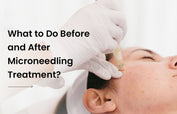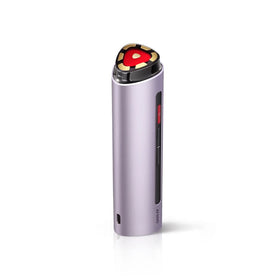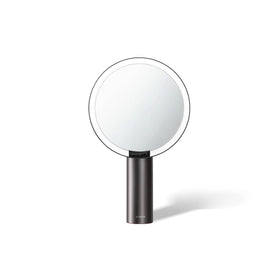どの顔の形が最悪の年齢ですか?
顔の形についてはあまり意識することはないかもしれませんが、それを理解することは、ヘアスタイルの選択から似合うサングラスの選び方まで、あらゆる面で役立ちます。 最高のメイクアップテクニックを決定するには、この解剖学的詳細が重要です。
顔の形は、遺伝に基づく骨格構造によって決まります。しかし、加齢とともに皮膚のコラーゲンが減少するため、顔の形はわずかに変化し、輪郭がぼやけた印象を与えることがあります。
この記事では、最も一般的な顔の形、自分の顔に最も近い形を判断する方法、年齢を重ねても顔の構造を維持する方法について説明します。
最も一般的な6つの顔の形
一般的な顔の形は6つあり、それぞれに独自の特徴があります。具体的には以下のとおりです。

楕円形
- 頬骨は顔の中で最も広い部分です
- 湾曲した顎のラインとあご
- 高い額
- 顔は横幅よりも長い
四角
- 額、頬、顎のラインはほぼ同じ幅です
- 顎のラインはわずかに角度がついており、カーブは最小限でシャープです。
- 顔の幅は長さとほぼ同じです
ラウンド
- 頬骨は顔の中で最も広い部分です
- 顔の側面がわずかに外側にカーブしている
- 顎が丸い
- 顔の幅は長さとほぼ同じ
矩形
- 額、頬、顎のラインはほぼ同じ幅です
- 顎のラインはわずかに角度がついており、カーブは最小限でシャープです。
- 顔は横幅よりも長い
心臓
- 額は顔の中で最も広い部分です
- 顎のラインが狭く、顎が尖っている
- 生え際が丸みを帯びている、またはピークが尖っている
- 顔の幅は長さとほぼ同じ
ダイヤモンド
- 頬骨は顔の中で最も広い部分です
- 顎は尖っていて、頬骨は高く、生え際は狭い
- 顔は横幅よりも長い
顔の形を判断する方法
それぞれの顔の形についてよく理解できたので、次はどの形が自分の顔に最も合うかを判断しましょう。
顔の形を判断する最も簡単な方法は、鏡で自分の顔をなぞることです。鏡を見ながら、口紅、水で落とせるマーカーなどを使って、顔の輪郭をなぞります。鏡から少し離れて、上記のガイドラインを参考に、輪郭に基づいて顔の形を判断してください。
6つの異なる顔の形はどのように老化するのでしょうか?
老化は普遍的なプロセスですが、顔の構造は私たちの老化に大きく影響します。自分の顔の形を理解することで、将来の変化を予測し、スキンケアルーティンをより効果的に行うことができます。臨床研究の知見に基づき、6つの主要な顔の形がどのように老化していくのかを詳しくご紹介します。
楕円形の顔の形
卵型の顔は、年齢を重ねるにつれて年齢を重ねる傾向があります。しかし、主な問題は中顔面のボリューム減少です。涙溝(目の下のくぼみ)やほうれい線(笑いじわ)が目立つようになることがあります。この経験は、顔の老化の主なメカニズムの一つであるボリューム減少に直接関連しています。『Aesthetic Surgery Journal』誌に掲載された画期的な3D画像研究は、老化は単に皮膚のたるみだけでなく、特に中顔面において顕著な「萎縮」を引き起こすことを実証しました。この下層の支持力の喪失が、目の下のくぼみや笑いじわの深まりにつながるのです。
四角い顔の形
四角い顔の強固な骨格は皮膚をしっかりと支え、下顔面のたるみやたるみを防ぎます。この優れたサポート力の背後にある科学的根拠は、下顎骨にあります。国立医学図書館が発表した、老化に伴う顔面骨格に関する研究によると、強く輪郭のはっきりした下顎骨は、重力による下向きの引力に抗う強力なアンカーとなることが示されています。問題は、頬の脂肪が加齢とともに下がっていき、下顔面に沈み込むことで、顎のラインが重く見えたり、「下がって見える」という点です。
丸顔
丸顔の人は、脂肪がたっぷりと分散しているため、肌がふっくらと見えるため、若々しく見えることが多いです。しかし、その欠点は、骨を支える強固で角張った骨格が不足していることです。これは、軟部組織と下層構造の相互作用に起因しています。『Aesthetic Surgery Journal』に掲載された顔面保持靭帯に関する研究は、明確な説明を提供しています。これらの靭帯は、皮膚と脂肪を固定するアンカーとして機能します。骨格が目立たない顔では、これらの靭帯がより大きな負荷を負担します。加齢とともに軟部組織が弱まると、丸顔の豊かな軟部組織は全体的にたるみやすくなり、たるんだ顎や首の輪郭がぼやけやすくなります。
長方形の顔の形
四角い顔と同様に、長方形の顔の形はしっかりとしたサポート力を持っています。しかし、加齢による主な問題は、頬のボリュームが失われることで、時間の経過とともに顔がやつれて見えたり、こけたりし、疲れた印象を与えてしまうことです。また、目元も早期にボリュームが失われ、目尻のシワが目立ちやすくなります。
ハートの顔の形
ハート型の顔は、見た目の変化が最も顕著に現れることが多いです。若々しく高い頬骨は、脂肪層が適切な位置にあることで支えられています。しかし、脂肪層が重力で下がると、顔の上部からボリュームが失われ、下部に蓄積されます。その結果、ほうれい線が深くなり、頬のたるみができ、若々しいハート型が「反転」してしまいます。
ダイヤモンド型の顔の形
高くて強い頬骨は顔の中央部分をしっかりと支えるため、ダイヤモンド型の顔は頬のたるみやほうれい線ができにくくなっています。しかし、ダイヤモンド型の顔の主な問題は、特にこめかみや目の下のボリュームが失われ、顔が凹んだりくぼんだりする印象を与えてしまうことです。
年齢を重ねても顔の形を維持するにはどうすればいいでしょうか?
今すぐ購入
よくある質問
1. Q: 高周波 (RF) による肌の引き締めは本当に効果がありますか?
A: もちろんです。ラジオ波は臨床的に証明された技術で、肌の深層を優しく加熱することで、ハリのある若々しい肌に必要なコラーゲンとエラスチンの生成を促進します。Journal of Clinical and Aesthetic Dermatologyなどの権威ある学術誌に掲載されたものを含む数多くの研究で、しわの軽減と肌の引き締め効果が確認されています。皮膚科医が用いる最も信頼できる非侵襲的治療法の一つです。
2. Q: 自宅での高周波治療は安全ですか?副作用にはどのようなものがありますか? 詳細はこちら>>>
A: はい、高品質で優れた設計の機器を使用すれば、家庭用RFは非常に安全です。最も重要な安全機能はインテリジェントな温度制御で、肌表面を保護しながら深層部まで効果的に治療します。当社のR3 Turbo機器はこの技術を搭載しています。副作用の可能性は最小限で一時的なもので、通常は軽い赤みが出る程度ですが、すぐに治まります。ダウンタイムはありません。
3. Q: 高周波治療の効果が現れるまでどのくらいの時間がかかりますか?
A: 施術直後はコラーゲン繊維の収縮により、かすかな一時的な引き締め効果を感じられるかもしれません。しかし、真の持続的な効果は、体内で新しいコラーゲンが生成される数週間から数ヶ月かけて徐々に現れます。最良の結果を得るには、継続して使用することが重要です。多くのお客様は、8~12週間の継続使用で、肌のハリとシワの減少に顕著な改善を実感されています。
4. Q: ラジオ波は顎のたるみに効果がありますか?
A: はい、これはRF技術の主な効果の一つです。ラジオ波は、顔の下半分の肌を引き締め、コラーゲンの生成を刺激することで、リフトアップとハリをもたらし、よりシャープで引き締まった顎のラインへと導きます。R3 Turboには、顎のたるみを特に目立たなくする専用の「顎ラインモード」も搭載されています。
5. Q: 無線周波数 (RF) とマイクロカレントの違いは何ですか?
A: 素晴らしい質問ですね!どちらもアンチエイジングに使用されますが、作用は異なります。マイクロカレントは、微弱な電流を用いて顔の筋肉を鍛え、引き締め、リフトアップさせるトレーニングのようなものです。ラジオ波は、より深層部に作用し、熱を用いてコラーゲンの生成を刺激することで、肌の基礎を再構築します。R3 Turboは、強力なRFと強力なEMSマイクロカレントの両方を組み合わせた独自の技術で、肌の引き締めと筋肉の引き締めを1つのデバイスで実現します。
6. Q: 家庭用 RF デバイスはどのくらいの頻度で使用すればよいですか?
A: 機器によって異なりますので、必ずメーカーの指示に従ってください。R3 Turboのような強力で効果的な機器の場合、肌に過度な刺激を与えることなく最適な効果を達成・維持するには、通常、週2~3回のご使用をお勧めします。1回のご使用は短時間で、夜のスキンケアルーティンに簡単に組み込むことができます。
7. Q: 高周波を使用してはいけない人はいますか?
A: RF はほとんどの人にとって安全ですが、妊娠中の方、ペースメーカーやその他の体内電気機器を装着している方、治療部位に皮膚疾患や開いた傷がある方には一般的に推奨されません。特定の健康上の懸念がある場合は、新しい治療を開始する前に必ず医師に相談してください。








